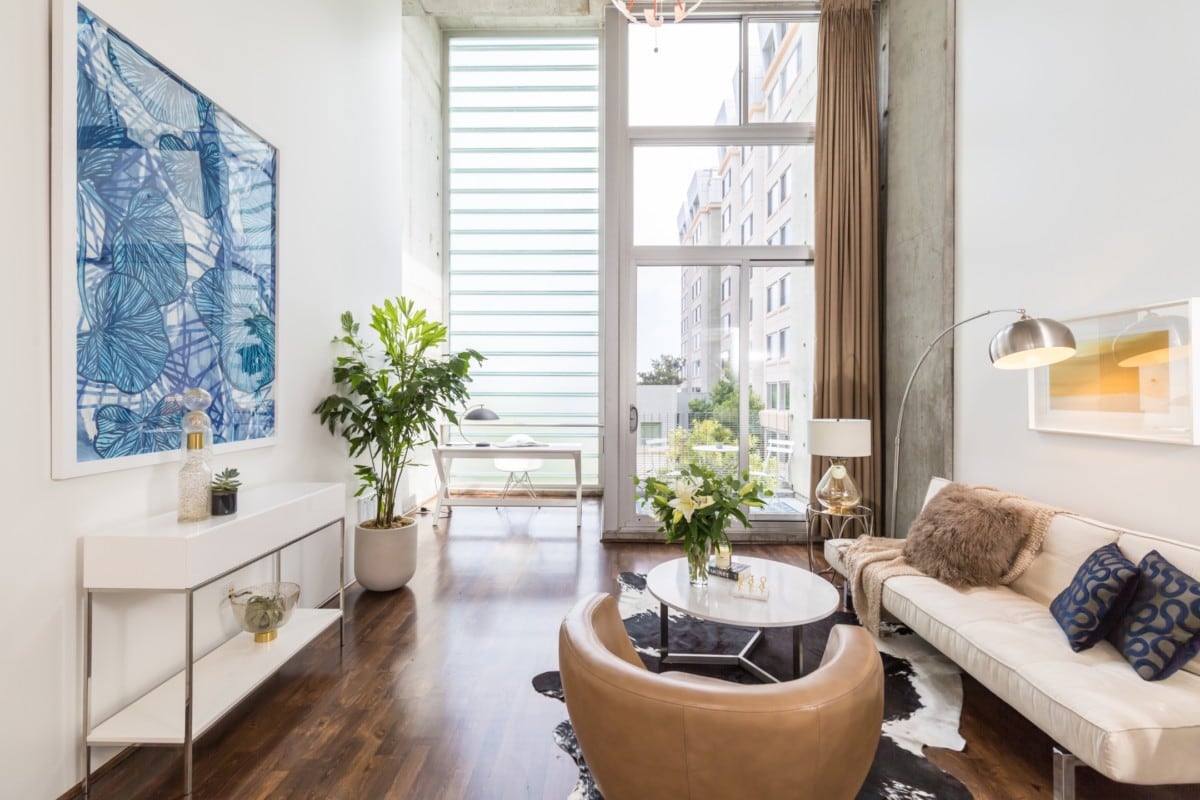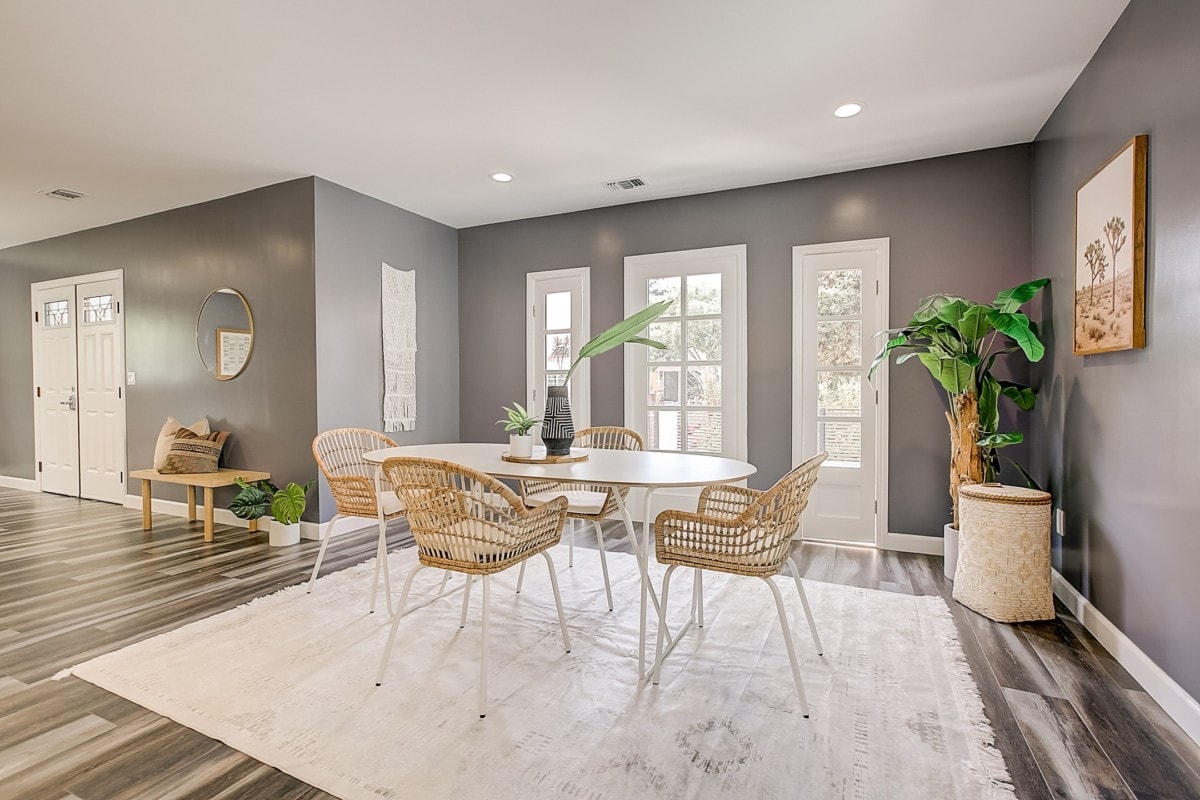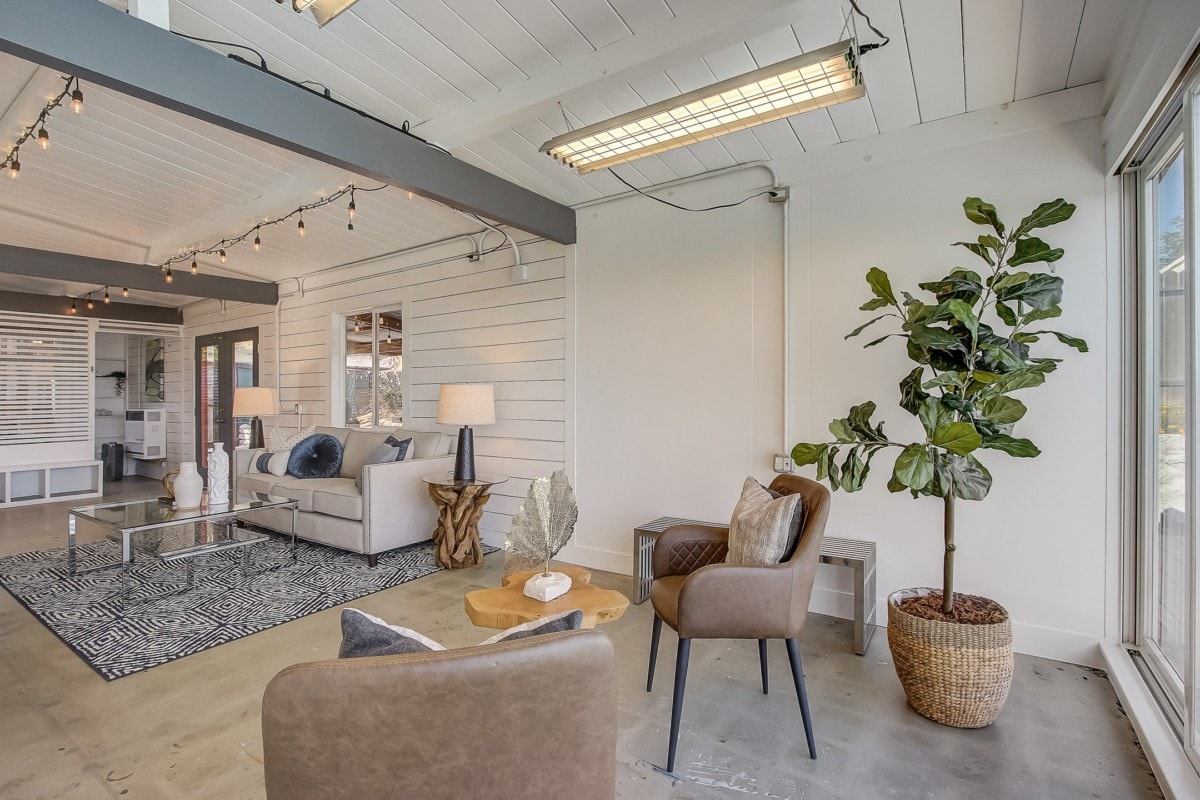Indoor plants are the home décor staple that will never go out of style. They are beautiful, vibrant elements that can make any room spring to life. But for many, the biggest challenge is caring for them properly. Don’t worry though, we’re here to help out new plant parents as they begin to decorate their home. From San Diego, CA to New York, NY, houseplant experts across the country shared with us the most common mistakes beginners make when it comes to indoor plant care. Keep these common mistakes in mind as you begin incorporating houseplants into your interior design:

Indoor plant care mistakes can occur before even purchasing and caring for your plant
1. Not considering your indoor environment before purchasing your plant
It’s important to check your light situation before you buy a big beautiful plant like a Fiddle Leaf Fig. No matter how well you remember to water your plants, if you have a light-loving plant in a dark apartment or home, you are setting yourself up for a stressed plant. Make sure to always consider how bright your apartment is before you buy your next plant, it will help you make the best selection for your home. – Desk Plants
Decide where you want the plant to live, determine how much light that area receives, and choose a plant that can thrive in that environment. Most plants are categorized as low, medium, or high for sunlight so make sure you find one that fits what your plant needs to survive. – Petite Petal
2. Purchasing an indoor plant that’s not compatible with your lifestyle
As houseplants become more popular because of social media, plant beginners rush online or to the store to buy those beautiful plants that they know nothing about. I truly believe the biggest mistake plant beginners make is buying the wrong plants for their lifestyle. Busy people, or people that travel a lot for work, should buy low maintenance plants. People that live in shaded homes, should buy low light plants and people with pets should buy non-toxic plants. – My Tasteful Space
3. Choosing a trendy plant without considering if it’ll thrive in the intended area
We see a lot of new plant parents gravitating towards large “trendy” plants, such as the Fiddle Leaf Fig, regardless of the lighting in their space. Sometimes this mistake can take a big toll on your wallet, as those large plants can add up quickly. We recommend snapping some photos throughout the day to capture the lighting in the space you’d be putting the indoor plant in. Bring your photos with you when shopping for a large statement plant, that way you can show a plant expert and we can help pick out the best plant for your spot. – Crimson Horticultural Rarities
Giving your indoor plants too much love (and water) does more harm than good
4. Overwatering is one of the most common indoor plant care mistakes
Everyone wants to love their new plants, but unfortunately, if you water them too much they are unable to take up the nutrients they need to survive and in turn will end up inviting unwanted pests into your home (i.e. fungus gnats). Most houseplants only need water every 7-10 days and some need even less. If you notice any browning at the tips of your plant, cut back on the watering. – North End Organic Nursery
A quick tip: more light = more water, less light = less water. In the winter, cut back your watering if you live in a location where your natural daylight decreases. – Learn Plant Grow
Many houseplants, especially those acclimated to lower light, need a light watering every 10-14 days. You want to keep the soil moist but not soggy, so just enough to moisten the dirt without creating a soggy over-saturated environment. – Lawrence & Clarke Cacti CO.
5. Not having balanced watering habits
The single most important mistake that new gardeners make is loving their plants to death by overwatering and then forgetting about them when they are doing well and under-watering. Balanced watering habits are essential. Researching the plant’s origin will teach you everything you need to know. – Homestead Gardens
6. Long-term misting indoor plants
Misting plants is another common practice that needs to become uncommon. Very few plants are tolerant of long-term misting; it can lead to fungal problems and causes excessive dust accumulation on the leaves which hinders photosynthesis. Overfertilizing is another concern and when tacked on with overwatering, it’s a recipe for death and disappointment. – Hoerr Nursery

Common repotting mistakes to be aware of
7. Not letting your plant get acclimated before repotting
A common mistake that people make is that they want to re-pot their new plants immediately after they get them. Let the plant acclimate to your home first, then after a few months, you can re-pot it. Use some Vitamin B to help it ease through the acclimation and repotting. – Inside Plants
Many plants have travelled a lot from greenhouses, to supply houses, to florists and nurseries, and then to your home. Keeping them in their nursery containers keeps them from getting shocked even more and letting them acclimate and thrive from the beginning. – Enchanted Florist
8. Planting your indoor plant in too big of a pot
Planting in too big of a pot results in excess soil at the root zone that remains wet, because there aren’t enough roots to soak up the water. The excess wet soil leads to a buildup of fungal pathogens, and ultimately root rot. – Healthy House Plants
9. Unnecessary or improperly repotting your indoor plants
Potting your small plant into too large a pot doesn’t mean it will grow bigger and faster. It overwhelms your plant with too much soil holding more moisture, which can easily lead to root rot. When you re-pot your plant, you should only increase the pot size by about 2 inches (ie. your plant in a 6″ pot, should then go up to an 8″ pot). – Plant Therapy
Indoor plant care mistakes you may not have thought about
10. Not enough humidity
House plants are good at communicating their needs to you. If your plan isn’t getting enough humidity it may show one of these signs: leaf tips become shriveled, brown and/or crusty, leaf edges turn yellow and wilting may occur, or buds and flowers shrivel and fall off. Leaves fall if the plant is very sensitive to dry air and may begin to drop their leaves once you turn on the heat in the winter. The solution is to mist your plants in between watering and, if needed, purchase a humidifier to give your plants even more TLC. – The Zen Succulent
11. Not mimicking the care your plant was receiving before
Our best is advice is to mimic the care your plant was getting before you purchased it to ensure an easy transition. What lighting conditions was it in? How often was it being watered? It can be so tempting to give your new plant a drink every day or keep moving it to find that perfect spot. But most plants want the chance to settle into their new environment and only want to be watered every week or so. – Pigment
12. Giving up too soon when it seems like your indoor plant care is failing
It’s easy to give up too quickly when your first plant doesn’t make it. There are a number of beautiful plants that are not overly particular about lighting, watering, or even occasional neglect. Just start with one or two good beginner plants, and you will gain confidence – don’t give up! – Retreat
13. Not being patient with your indoor plants
New plant parents are often unfamiliar with the slow pace of indoor plant care. Making a change in care often takes weeks to understand the impact, and if a plant is going through an adjustment by being indoors for the first time, it may lose leaves because of the reduced light. – Water & Light Plant Shop
14. Using mayonnaise as a leaf-shiner
A common mistake is thinking that mayonnaise makes a great leaf shine. You may end up with shiny leaves, but you’ll also end up clogging the stomata (which are like pores, but for plants) and interfering with your plant’s natural processes. Save the mayo for your sandwiches and simply clean dusty leaves gently with water. – House Plant Hobbyist
15. Putting a layer of pebbles in a non-draining pot
Does a layer of pebbles in a non-draining pot provide the drainage that succulents famously need? No, it actually does the opposite. A layer of pebbles traps stagnant water, creating a microbial soup that eventually rots plant roots. However, you can grow succulents in non-draining containers, as long as you keep the soil dry and water only enough to moisten the roots. – Debra Lee Baldwin

Without proper indoor plant care, your succulents will struggle
16. Not placing succulents in an area that receives plenty of sunlight
People like to keep succulents indoors as houseplants and this can work great if you have a very sunny spot. The most common issue is plants stretching out to reach for the light if they are not getting enough. If this happens you can either move it outside or try a grow light. – Vivid Root
17. Not properly watering succulents
There are 2 ways water can kill your succulents: bottom-up and top-down. Bottom-up: succulent roots are like goldfish and will keep drinking until it explodes, so make sure to only water when the soil is bone dry. Top-down: leaving standing water on succulents for a few days will also rot them out, so make sure to tip over your plants or give them a gentle shake to remove that excess water. – Harddy
18. Misting succulents instead of soaking them
Resist the spray bottle. Using a “drench and dry” method with your succulents will promote healthy root growth, and it will help them grow faster! Grab a watering can or cup to pour water into the base of your succulent until you see it drip out of the drainage holes, then wait a couple of weeks and repeat. – Succulent Studios
19. Thinking that succulents are “no water plants”
We hear this all the time, “I haven’t watered my succulents for about 3 weeks and they aren’t looking so good. What am I doing wrong?” Contrary to what you may have heard, succulents are LOW water plants, not NO water plants. Make sure to water your succulent plants only when the soil is completely dry, but don’t allow the soil to remain dry for extended periods of time either – Leaf & Clay

 United States
United States Canada
Canada